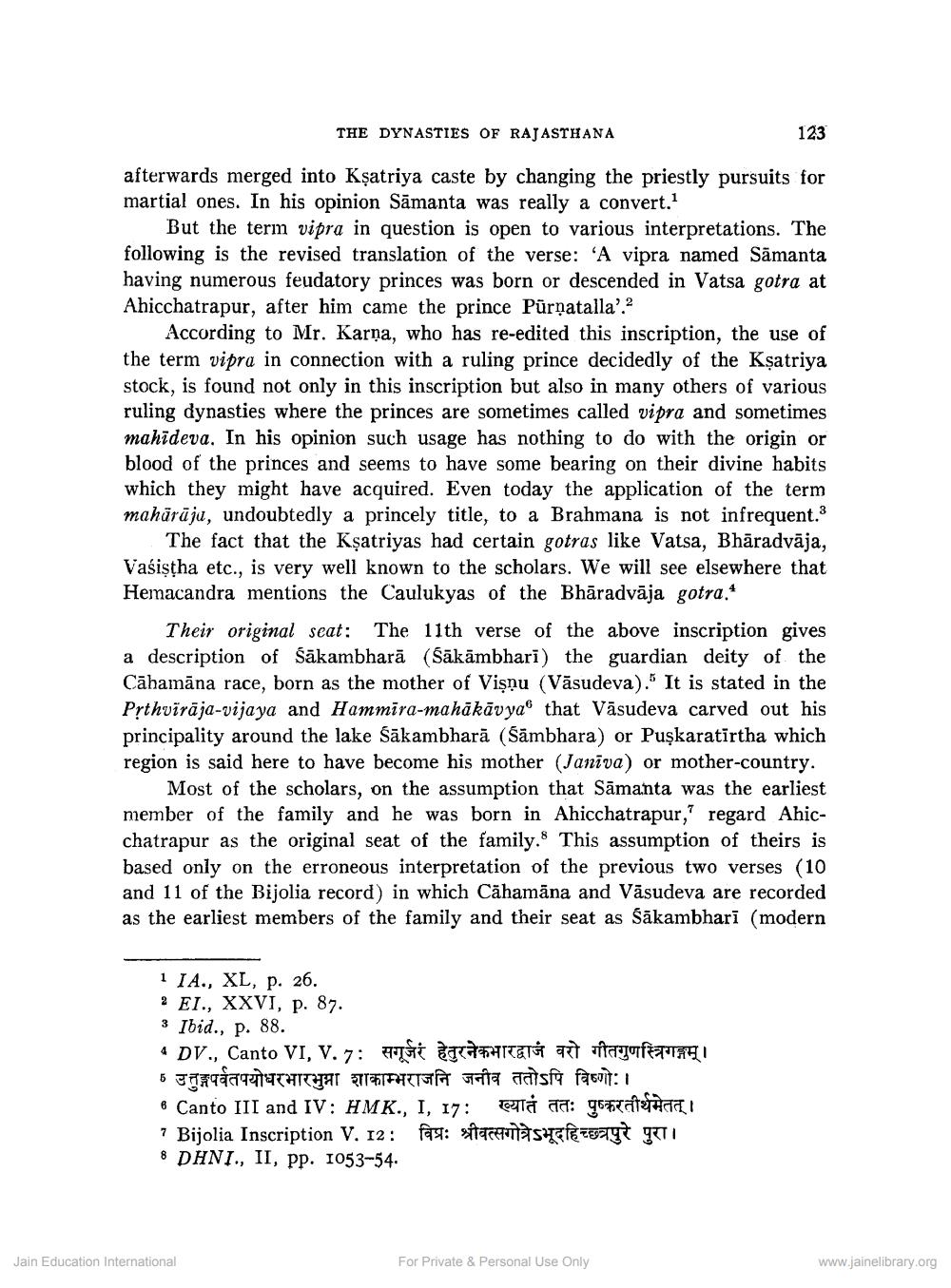________________
THE DYNASTIES OF RAJASTHANA
123
afterwards merged into Kșatriya caste by changing the priestly pursuits for martial ones. In his opinion Sāmanta was really a convert.
But the term vipra in question is open to various interpretations. The following is the revised translation of the verse: 'A vipra named Sämanta having numerous feudatory princes was born or descended in Vatsa gotra at Ahicchatrapur, after him came the prince Pūrņatalla'.?
According to Mr. Karna, who has re-edited this inscription, the use of the term vipra in connection with a ruling prince decidedly of the Ksatriya stock, is found not only in this inscription but also in many others of various ruling dynasties where the princes are sometimes called vipra and sometimes mahideva. In his opinion such usage has nothing to do with the origin or blood of the princes and seems to have some bearing on their divine habits which they might have acquired. Even today the application of the term mahārāju, undoubtedly a princely title, to a Brahmana is not infrequent.3
The fact that the Ksatriyas had certain gotras like Vatsa, Bhāradvāja, Vašistha etc., is very well known to the scholars. We will see elsewhere that Hemacandra mentions the Caulukyas of the Bhāradvāja gotra.*
Their original seat: The 11th verse of the above inscription gives a description of Sākambharā (sākāmbhari) the guardian deity of the Cāhamāna race, born as the mother of Vişnu (Vāsudeva). It is stated in the Prthvirāja-vijaya and Hammira-mahākāvyae that Vāsudeva carved out his principality around the lake Sākambharā (Sambhara) or Puşkaratirtha which region is said here to have become his mother (Janīva) or mother-country.
Most of the scholars, on the assumption that Sāmanta was the earliest member of the family and he was born in Ahicchatrapur, regard Ahicchatrapur as the original seat of the family. This assumption of theirs is based only on the erroneous interpretation of the previous two verses (10 and 11 of the Bijolia record) in which Cāhamāna and Väsudeva are recorded as the earliest members of the family and their seat as Sākambharī (modern
1 IA., XL, p. 26. ? EI., XXVI, p. 87. 3 Ibid., p. 88. 4 DV., Canto VI, V. 7: ATE TIETĀ att tayott
उत्तुङ्गपर्वतपयोधरभारभुन्ना शाकाम्भराजनि जनीव ततोऽपि विष्णोः। 6 Canto III and IV: HMK., I, 17: cá na: grattack! 7 Bijolia Inscription V. 12: fast: itaasuf25297 ATI 8 DHNI., II, pp. 1053-54.
Jain Education International
For Private & Personal Use Only
www.jainelibrary.org




